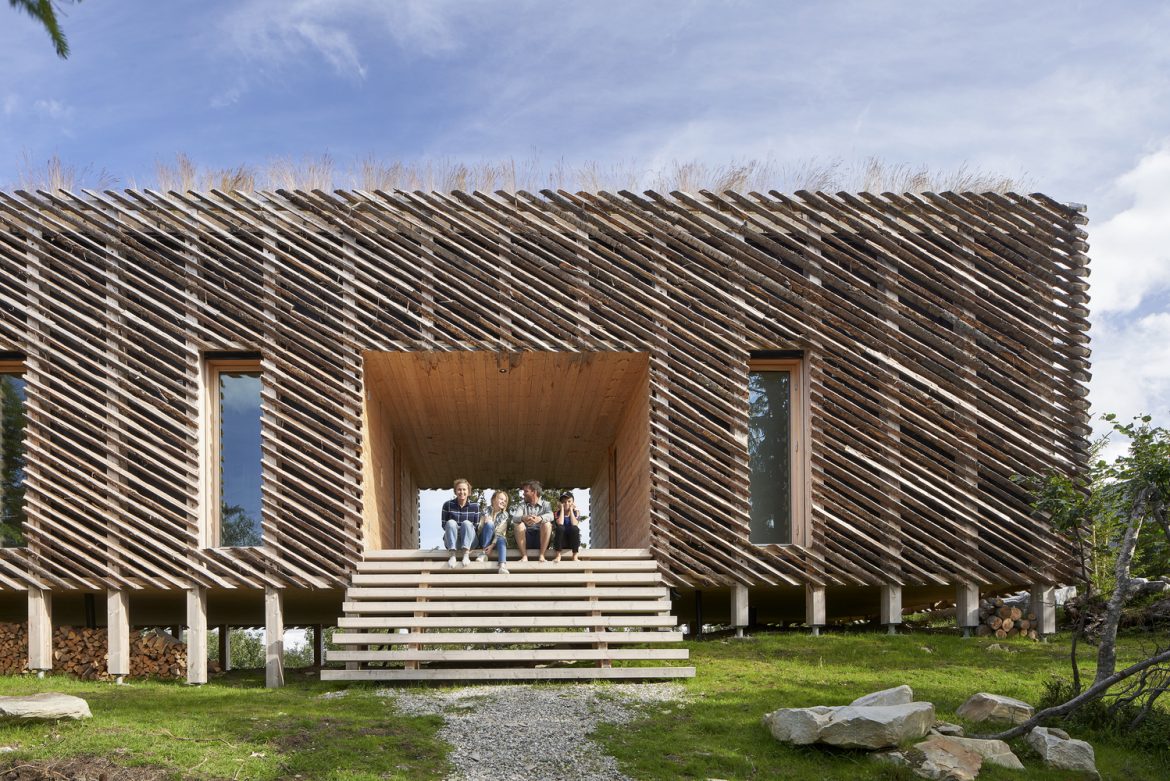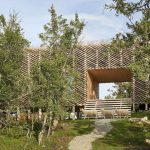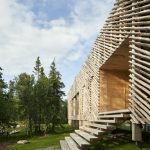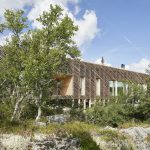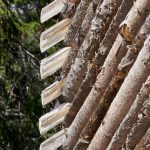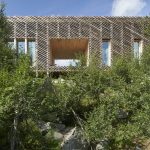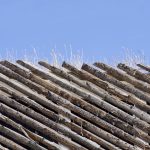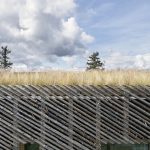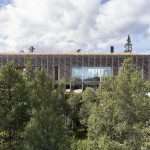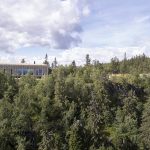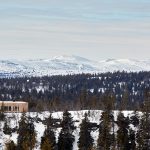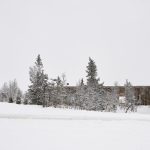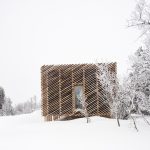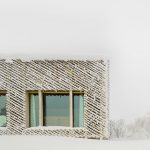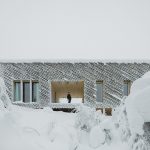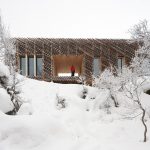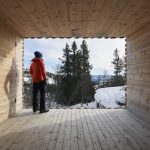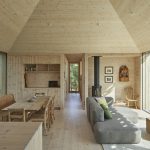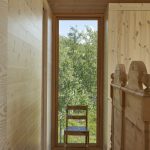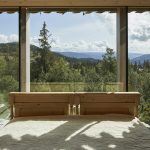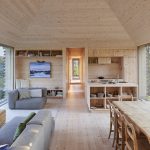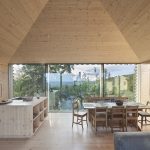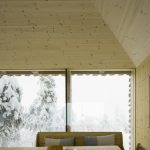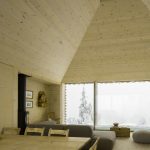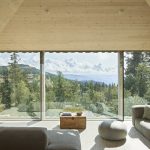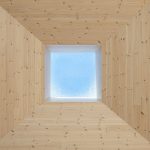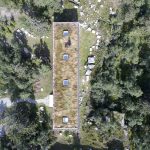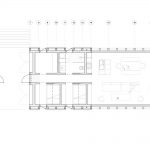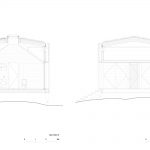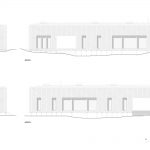Location: Norway, Architects: Mork-Ulnes Architects, Photographs: Bruce Damonte, Juan Benavides
Located on the west side of Kvitfjell, 45 minutes north of Lillehammer, the cabin designed by Mork-Ulnes Architects is situated 943 m above sea level, nearly at the top of the mountain (1,039 m). Its high altitude means the cabin is exposed to severe winter weather, at times being socked in and at times floating peacefully above the clouds in the valley below. From November until April, one can put on downhill skis and reach the local market to go grocery shopping, returning home using the lifts. On cross country skis one can connect to hundreds of kilometers of trails, reaching country lodges to rest and warm-up. In the summertime, it’s possible to hike from the cabin to the top of Kvitfjell (which means White Mountain in Norwegian) in about 20 minutes or reach one of the many streams and lakes for swimming and fishing.
The project is a site-specific response to the context and the cultural landscape. It stands as an example of how architecture can convey past knowledge into the present, creating an effective link with the built landscape. 45 wooden columns lift a 144 m2 cabin 1.5 m above the ground, allowing native grasses that sheep and cows graze on to grow below. The exterior cladding of the cabin is made of skigard, a 3 m long quarter cut log that is traditionally laid out diagonally by Norwegian farmers as fencing. While referencing rural architecture, the rough facade makes the cabin fit in within the rugged landscape and forested vegetation. In the winter when the gaps in the skigard siding fill with snow, the house is given new and softer expression.
The grass top of the cabin also recalls the traditional sod roofs, common on rural log houses in Scandinavia until the late 19th century. Listed by the local planning regulations as one of the few materials allowed for roofs (in addition to slate or wood), the fuzzy top, moving with the wind, helps soften the otherwise rigid rectilinear geometry of the cabin.
The cabin has a regular plan – an enfilade sequence of rooms in a row, following a central corridor – called Trønderlån in the Trøndelag region of Norway where Casper’s mother was born.
The architects have designed several other buildings on piers or raised foundations, like Moose Road (constructed on steel stilts to avoid severing tree roots) and Trollhus (lifted on concrete legs to protect it from snow), where they learned that it was an effective way of dealing with high snowdrifts and not needing to shovel the house out when the snow accumulates around doors and windows. Here, they decided to raise the cabin not just to have some protection from the elements while maximizing natural light and views, but also because they didn’t want to ruin the terrain with the earthwork required for a conventional foundation.
A notable feature of the house is that every surface is clad in wood. The unconventional roughness of the exterior log Skigard siding is matched by an almost wholly homogenous interior space where light and smooth solid pine paneling creates an intimate and cozy feel, offering few distractions to take the eyes away from nature outside. All of the cabinetry and custom furniture is made of three-layer cross-laminated pine sheets. The all-wood materiality also creates a unique wooden olfactory quality to the house.
The program was to have a three-bedroom cabin plus sauna and an annex that gave guests private space to retreat. Deferring to the natural landscape all around, Skigard Cabin engages the outdoors in a spectacular fashion. Two facing 6 meter-long floor-to-ceiling walls of glass provide the open-plan living, kitchen and dining area with a grand vista, creating the experience of being outside, exposed to the ever-changing scenery. The large south- oriented glass wall allows low winter sun to illuminate the house during the day. In addition to the glass walls, a skylight at the apex of the frustum ceiling channels natural light into the living areas.
The first approach to the house is walking up the stairs to the veranda, where one first experiences the spectacular view through a portal clad in heart pine. There are two doors on either side of the portal which open to the main house (left) or guest annex (right). Upon entry to the main house, one finds a hallway with direct access to a mudroom where one can remove outer layers of clothing and shoes and enter the house. Under the first frustum skylight, the entry hallway also accesses the children’s’ two compact bedrooms and baths. After walking through the compression of the hallway space, one walks back into nature finding a room composed of two long walls of glass – with views of the valley and ski slopes on one side and woods and meadow on the other. The great room houses the main communal space containing kitchen, lounge and dining area. At the end of the great room, one finds the master suite – with a bathroom and sauna. On the other side of the veranda, the guest annex contains a bedroom, bathroom, spacious lounge area, and sleeping loft.
[Text description provided by the architects]
